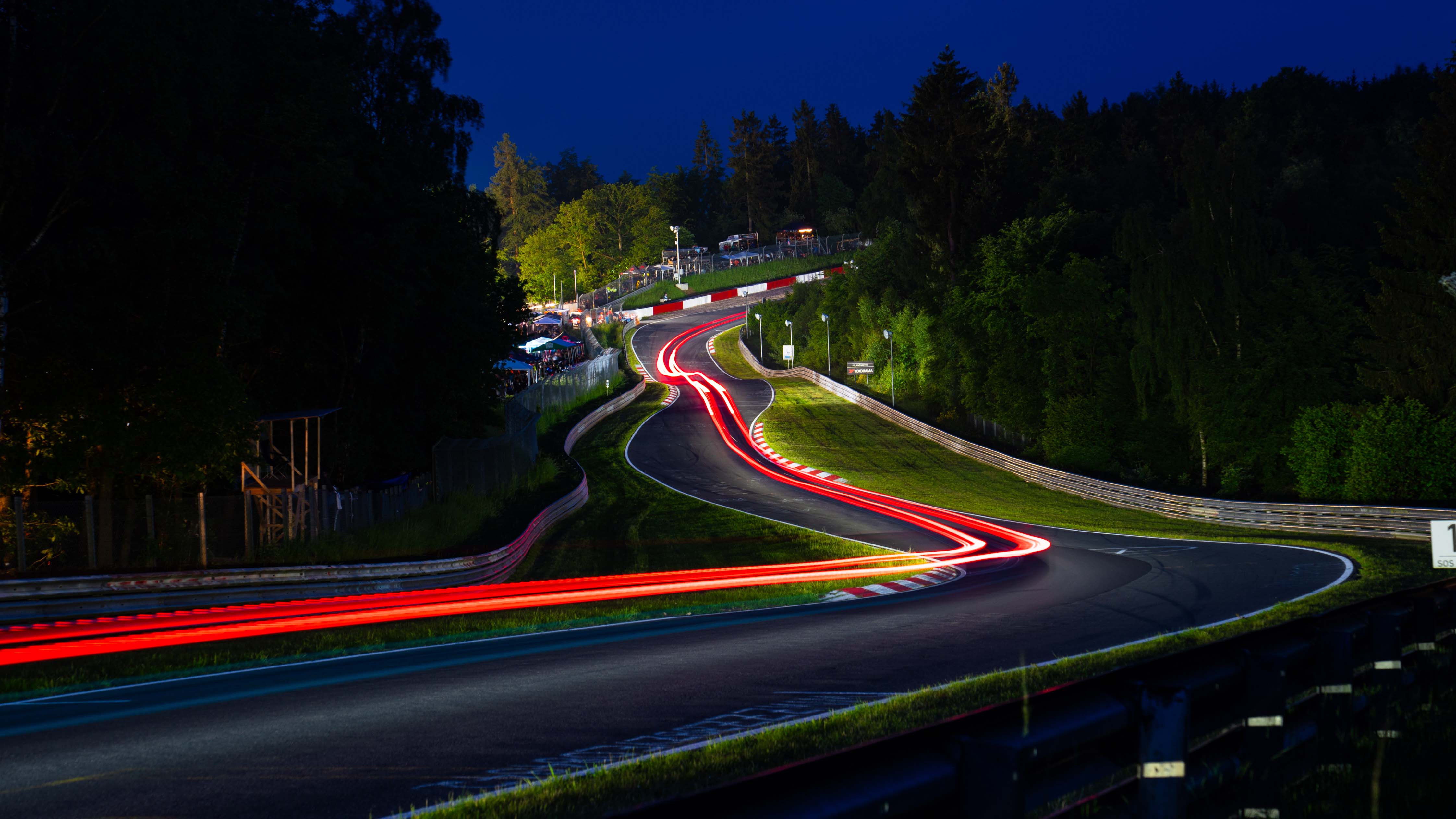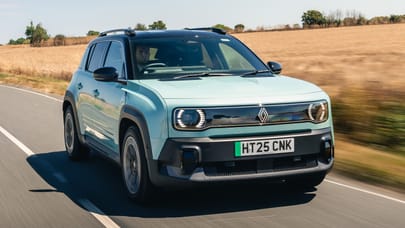
Here are a pro driver’s tips for surviving the Nürburgring 24 Hours
Overtake quickly, avoid eating a currywurst beforehand and hope for luck. Lots of luck
Sven Mueller is a 33-year-old, Mainz-born racing driver who was competing in karts from the age when most of us were still in nappies. He then traded paint in both Formula 4 and 3, before signing as a Porsche works driver and racking up a string of trophies - including the 2016 Porsche Supercup and Carrera Cup.
He’s also done a fair bit of racing in the Nürburgring Langstrecken-Serie (NLS), which comprises various four, six and 12-hour races at the Green Hell. He’s won multiple events over the last three years, priming him to take on the infamous Nürburgring 24 Hours this weekend.
Mueller will be representing Falken Motorsports - you know, the team Irish drift sensation James Deane burns rubber for - and he’ll be seated in a Porsche 911 992 GT3 R. Its water-cooled flat-six gains carbon manifolds, butterfly intakes and a tweaked central exhaust, sending its output up to 558bhp. It’s also supported by a bespoke traction control system and a motorsport-grade carbon fibre clutch.
It all sounds very dandy. But behind the no-doubt brilliant engineering, just how daunting is the N24 for the person in the seat? Over to you, Mueller.
TG: Is it the hardest race in the world?
SM: Yes. The track itself is difficult, but you also need to manage traffic and keep the level of risk as low as possible to survive. As for the car, there’s so much elevation change and kerb riding. To complete 24 hours without stopping or having a technical issue, it’s why we do so much preparation with the NLS races. And that’s before we even mention the weather: it’s 25 degrees and sunshine at one end, and it could be a hailstorm at the other.
Finishing is such a huge achievement in itself. You aren’t just combating tiredness and avoiding costly errors, but you need luck. Without luck, you won’t win the N24. Back in 2019, I was leading the race with three hours to go, and then I had a differential issue, caused by some debris puncturing a tyre. A tiny bit of debris on the track. It goes to show the fine margins in winning or losing at the Nürburgring.
How difficult is overtaking?
It’s one of the biggest talking points at the ‘Ring, because you can gain or lose as much as 20 seconds sometimes, depending on holdups. You have to get past as quickly as possible. You cannot wait one or two kilometres until there’s a long straight, because there are far too many cars on the track, of different classes and strengths, so you’re never far from traffic.
At the end of every corner, you have to choose if you’re going to go right or left and stick to your decision. It also helps that when your teammates come in, they give you some idea about which cars on the field are willing to let you go past and which aren’t. Some drivers are on their own without any guidance, and therefore cannot look into their mirrors regularly.
You sort of just have to go for it and hope the approaching car doesn’t close the door. But the issue here is that if you’re too pushy, you’ve got a high risk of damaging the car. You need to be strong enough to survive, but not aggressive enough to crash. Because if you’re quick for four or five hours straight, and then you lose five minutes in the pits because of an issue, your position is gone.
Just how bad is visibility at night?
Really poor, as you can imagine. We’re lucky with the 911, because Porsche lights tend to be good. Other drivers in the paddock sometimes say that, if they’ve got a Porsche behind, it blinds them. To get around this, some manufacturers tape up the back screen of the car so that lights and flashes from obstacles behind don’t affect them as much.
Top Gear
Newsletter
Thank you for subscribing to our newsletter. Look out for your regular round-up of news, reviews and offers in your inbox.
Get all the latest news, reviews and exclusives, direct to your inbox.
There are so many elevation changes and blind corners, and light obviously cannot go past the apex and the exit of a corner, so that’s why having good vision and a comfortable line of sight is so important. Another issue a lot of people don’t realise is the smoke. When we go past BBQ sections such as Brunnchen, it’s very thick and you think it might be a patch of fog.
How do you prepare yourself for a stint?
I don’t have any weird rituals, if that’s what you mean. I look at the onboard video of whichever teammate is currently racing, and assess all the circumstances: how are the conditions? How is the field spread out? Where could we gain time? Are there any particular wet spots to be aware of?
Doing this makes me feel ready and helps me understand how I can just head right out and be as quick as I can be. If I can assess these things before getting in the car, then it’s just a matter of acclimatising to the tyres and level of grip.
OK, no weird rituals. Any weird foods then?
You can’t have a currywurst two minutes before a stint, that’s for sure. Jokes aside, nutrition is important. We have plain water supplies in the car, a litre’s worth to last us for a stint, and that’s more than enough. You can’t just drink when you want either; it’s only when you get up to certain sections that aren’t as technical or corner-heavy.
Put us in your shoes: how does a flat-out lap feel?
Your heart rate goes up like crazy as soon as you set off. Within two or three kilometres, you’re reminded why the ‘Ring is the best track in the world. The corners come at you thick and fast, the forest is right up against you, and you’re constantly trying to calculate how to overtake people and push the car to go faster. Eventually, you settle into a rhythm and start to flow. Your pace is consistent, and each corner comes together beautifully, one after another. There’s no feeling quite like it in this world when that happens.
Images: Falken Motorsport
Trending this week
- Car Review
BMW iX3










